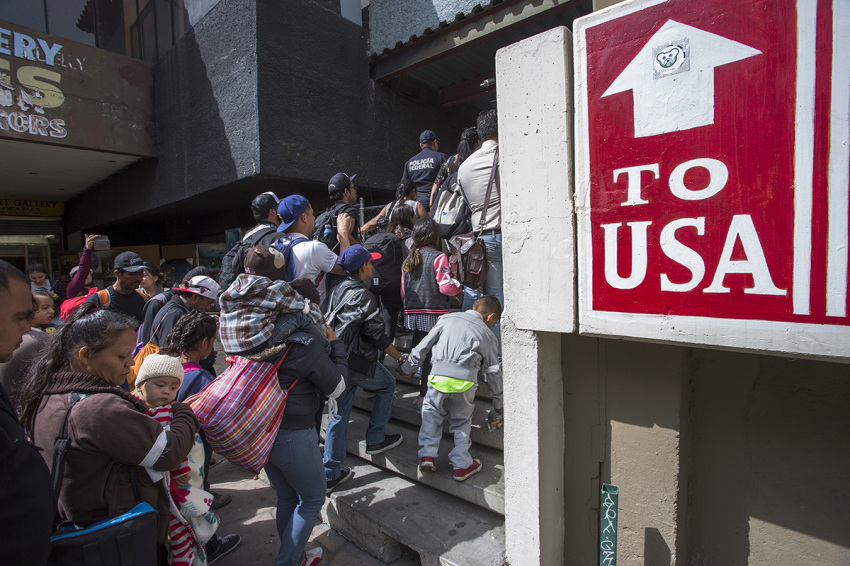Afghan migrant on terror watchlist released into US by border agents

The U.S. Department of Homeland Security has denied that border agents knowingly released an Afghan migrant on the national terrorist watchlist into the United States, saying it could not initially corroborate the man's identity before he was released.
Agents initially apprehended 48-year-old Mohammad Kharwin in March 2023 after he crossed the US-Mexico border illegally through California. While agents for U.S. Customs and Border Protection suspected Kharwin might be the person of the same name on the terrorist watchlist managed by the FBI, they didn't have corroborating information to confirm it.
In a statement to The Christian Post, a DHS spokesperson said the department takes seriously its responsibility to ensure individuals who enter the country do not pose a threat to national security. If an individual poses a threat to national security or public safety, the spokesperson said the process includes referring that person to other federal agencies for further vetting.
"NBC's assertion that CBP knowingly released an individual on the terrorist watchlist is inaccurate and entirely inconsistent with our practice at the border," the DHS spokesperson told CP.
As NBC News reported last week, Kharwin was arrested last month but released again by an immigration judge who was not told the man is on the FBI's terrorist watchlist as a member of the Hezb-e-Islami terror group. The judge ordered Kharwin released on bond, and the man paid the $12,000 bond on March 30.
Customs and Border Protection released the man last year after collecting his biometric data, NBC News notes, but the agency did not inform ICE about the Afghan national's potential match to a name on the terror watchlist. The report said Kharwin was referred to ICE's Alternatives to Detention Program, allowed to fly domestically and apply for asylum and work authorization.
According to the National Counterterrorism Center, Hezb-e-Islami is a political and paramilitary organization founded in the late 1970s by former Afghan Prime Minister Gulbuddin Hekmatyar. Hezb-e-Islami is a "virulently anti-Western insurgent group" that sought to replace the "Western-backed" Afghan government with an "Islamic state rooted in sharia."
"At the time of the initial encounter, the information in the record could not have provided a conclusive match. As soon as there was information to suggest that this individual was of concern, he was taken into custody by ICE," the DHS spokesperson said. "Law enforcement has been tracking the matter closely to protect against public safety risks. The individual is currently in U.S. custody."
According to the spokesperson, vetting is a "point-in-time check that evaluates information available to the U.S. Government at that time."
"If individuals who have entered the country are later found to be associated with information indicating a potential national security or public safety concern, DHS and our federal partners have procedures in place to investigate and take appropriate action in keeping with the mission of protecting the homeland," the spokesperson continued.
Reports of Kharwin entering the U.S. come not long after FBI Director Christopher Wray warned the House Select Intelligence Committee of an increase in the number of known or suspected terrorists using fake identification after crossing the southern border.
During his testimony in March, Wray said the FBI had seen an increase within the last five years of known or suspected terrorists attempting to cross the southern border.
"There are a few different categories of people that we have concerns about," Wray said. "When a known or suspected terrorist, as in known that they're a known or suspected terrorist, is apprehended at the border, I'm confident in the vast majority of instances there's very close lash-up between FBI and DHS (Department of Homeland Security) on it.
"The bigger concern is a situation, for example, where somebody presents fake identification documents at the border and there's not biometrics to match up — so there's no way to be able to know that they're not who they say they are. Then, they get into the country; then somehow we find out that they're someone in fact who's on the list."
Last month, U.S. Border Patrol apprehended a man trying to illegally cross the border near El Paso, Texas, who claimed he was a member of the terror group Hezbollah.
Basel Bassel Ebbadi, 22, stated in a sworn affidavit that he trained with Hezbollah for seven years and served four more as a guard for weapons locations.
According to documents shared last month by The New York Post, Ebbadi said that he was in the U.S. because he wanted to "try to make a bomb." At one point during an interview with officials, the migrant claimed he fled Lebanon to escape Hezbollah, saying that he "didn't want to kill people" and "once you're in, you can never get out."
Data from U.S. CBP shows that border patrol encountered 159 people within the Terrorist Screening Data Set at land border ports of entry so far in 2024. For the year 2023, the number was 564, compared to 380 in 2022. The number of encounters in 2021 was 157.
Samantha Kamman is a reporter for The Christian Post. She can be reached at: samantha.kamman@christianpost.com. Follow her on Twitter: @Samantha_Kamman


























